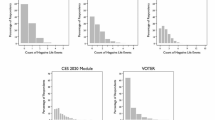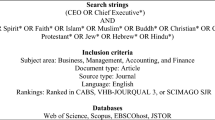Executive Summary
In order to engage in public policy, interest groups need to survive and thrive as organizations. What factors shape perceptions of group entrepreneurs as to the future prospects for their groups’ survival? The careful and ambitious work of Gray and Lowery (and others working in the population ecology paradigm) has drawn attention to that fact that not all groups that are born survive. This observation raises the question: what leads groups to ‘feel’ anxiety about their organizational mortality? In their 1997 article, utilizing survey data on the organizational characteristics and situational dynamics of a sample of groups lobbying in several US states, Gray and Lowery asked just that question: what are the levels of ‘mortality anxiety’ among groups still alive? In this article, we revisit this question using similar data, but with some additional variables, and for a non-US case (namely, post-devolution Scottish public policy). In sorting out what factors are associated with anxiety, our analysis seeks to weigh up the existing ecological emphasis on broad shifts in population-level forces (that is, competition) with group-level variables reflecting adaptive changes (that is, identity, uniqueness, changes).

Similar content being viewed by others
Notes
One reviewer reminded us that, in fact, some groups may well not seek to survive: they emerge to fight specific battles or campaigns, accepting success would see the group fold.
We do not investigate the link between mortality anxiety and actual mortality (but see Gray and Lowery, 1997).
These are particularly salient given that Gray and Lowery's work draws explicitly on the ecological thread in organizational studies that has increasingly focused on identity and antecedents in explaining population-level dynamics.
Note that due to our single country research design we cannot measure a variable like population density – Gray and Lowery could do this because they sampled across US states.
Legitimacy is the key mechanism that is said to govern formation, while competition governs subsequent survival prospects as populations grow in number (see Delacroix and Rao (1994) for a sympathetic critique of these as mechanisms of regulation in organizational populations).
We collected data from the 1982–2007 period, but given we survey groups active since 1999, we calculate measures of policy activity from a sub-set of this data. Devolution refers to the period after 1999 in Scotland whereby it was granted its own Parliament with powers to legislate on a limited number of so-called ‘devolved’ issues. The process in the United Kingdom, including powers granted to legislatures in Wales and Northern Ireland is referred to as devolution. Before 1999, the UK Parliament passed legislation relating to Scotland, but there was a Scotland Office that functioned as a Scottish civil service.
Given that Scotland does not have responsibility for all policy matters (so-called reserved matters), our data does not cover policy issues in areas like defense, national security, international trade or foreign affairs.
This data set was compiled largely using paper-based records held in the Scottish Government Library and its document storage facility in Edinburgh, but with the addition of some more recent documentation only available electronically on the Publications pages of the Scottish Government website.
The Scottish Government's internal Consultation Good Practice Guidance (2008) recommends that departments, on completing a consultation exercise, should deposit copies of responses with the Scottish Government Library and also post them on the Scottish Government website. However, this guidance has not always been followed, and therefore not all consultation documentation has made its way into the public domain.
Note that ‘don’t know’ responses are treated as missing in the analysis to follow. This explains the drop in the number of observations in the models presented in this article.
The original coding scheme was developed by Frank Baumgartner and Bryan Jones (see the Policy Agendas coding scheme codebook at www.policyagendas.org). However, we have used the modified UK Policy Agendas codebook at www.policyagendas.org.uk.
In their landmark study of lobbying populations, Gray and Lowery (2000, pp. 97–101) use HHI scores to examine the diversity of the lobbying populations of US states. Following Halpin and Thomas (2012), we also measured this variable according to entropy scores. However, we achieved the same finding, regardless of measure.
Note that we add one to all observations of Paid Staff before taking the natural log to avoid dropping observations with zero paid staff.
Note that a Brant Test indicates that the parallel regression assumption has not been violated, a Link Test indicates that specification error is not present, and that diagnostics of collinearity do not reveal any additional specification problems with the full model. (See full discussion of the diagnostic tests we utilized at www.ats.ucla.edu/stat/stata/dae/ologit.htm.)
Note that in the model estimation the Trade Association group-type is omitted, it is used as the baseline category.
This was regardless of how we calculated the identity index.
References
Aldrich, H., Staber, U., Zimmer, C. and Beggs, J.J. (1990) Minimalism and organizational mortality: Patterns of disbanding among U.S. trade associations, 1990–1983. In: J. Singh (ed.), Organizational Evolution. California: Sage.
Bouwen, P. (2002) Corporate lobbying in the European Union: The logic of access. Journal of European Public Policy 9 (3): 365–390.
Bouwen, P. (2004) Exchanging access goods for access. A comparative study of business lobbying in the EU institutions. European Journal of Political Research 43 (3): 337–369.
Browne, W.P. (1990) Organized interests and their issue niche: A search for pluralism in a policy domain. Journal of Politics 52 (2): 477–509.
Carroll, D.A. and Stater, K.J. (2009) Revenue diversification in nonprofit organizations: Does it lead to financial stability? Journal of Public Administration Research and Theory 19 (4): 947–966.
Carroll, G.R. and Hannan, M.T. (2000) The Demography of Corporations and Industries. Princeton, NJ: Princeton University Press.
Delacroix, J. and Rao, A. (1994) Externalities and ecological theory: Unbundling density dependence. In: J. Singh and J. Baum (eds.) Evolutionary Dynamics of Organizations. Oxford, NY: Oxford University Press, pp. 255–268.
Gray, V. and Lowery, D. (1996) A niche theory of interest representation. Journal of Politics 58 (1): 91–111.
Gray, V. and Lowery, D. (1997) Life in a niche: Mortality anxiety among organized interests in the American states. Political Research Quarterly 50 (1): 25–47.
Gray, V. and Lowery, D. (2000) The Population Ecology of Interest Representation: Lobbying Communities in the American States, Paperback edn. Ann Arbor, MI: University of Michigan Press.
Hagle, T.M. and Mitchell, G.E. (1992) Goodness-of-fit measures for probit and logit. American Journal of Political Science 36 (3): 762–784.
Halpin, D. and Jordan, G. (2009) Interpreting environments: Interest group response to population ecology pressures. British Journal of Political Science 39 (2): 243–265.
Halpin, D. and Binderkrantz, A. (2011) Explaining breadth of policy engagement: Patterns of interest group mobilization in public policy. Journal of European Public Policy 18 (2): 201–219.
Halpin, D. and Jordan, G. (2011) Quantifying Group Populations. Basingstoke, UK: Palgrave.
Halpin, D. and Nownes, A. (2011) Reappraising the survival question: Why we should focus on interest group ‘Organizational Form’ and ‘Careers’. In: A. Cigler and B. Loomis (eds.) Interest Group Politics, 8th edn. Washington DC: Congressional Quarterly Press.
Halpin, D., Baxter, G. and MacLeod, I. (2012) Multiple Arenas, Multiple Populations. In: D. Halpin and G. Jordan (eds.) Quantifying Group Populations, Chapter 6. Basingstoke: Palgrave.
Halpin, D. and Thomas III, H.F. (2012) Evaluating the breadth of policy engagement by organized interests. Public Administration, doi: 10.1111/j.1467-9299.2011.02005.x.
Hanegraaff, M., Braun-Poppelaars, C. and Beyers, J. (2012) The development of the WTO interest group population: Exploring density, stability and diversity over time. In: D. Halpin and G. Jordan (eds.) Quantifying Group Populations, Chapter 8. Basingstoke, UK: Palgrave.
Hannan, M. and Freeman, J. (1984) Structural inertia and organizational change. American Sociological Review 49 (2): 149–164.
Hannan, M.T. (2005) Ecologies of organizations: Diversity and identity. Journal of Economic Perspectives 19 (1): 51–70.
Heaney, M.T. (2004) Outside the issue niche: The multidimensionality of interest group identity. American Politics Research 32 (6): 611–651.
Imig, D. (1992) Resource mobilization and survival tactics of poverty advocacy groups. Western Political Quarterly 45 (2): 501–520.
Jordan, G., Halpin, D. and Maloney, W. (2004) Defining interests: Disambiguation and the need for new distinctions. British Journal of Politics and International Relations 6 (2): 195–212.
Jordan, G., Baumgartner, F., McCarthy, J., Bevan, S. and Greenan, J. (2011) Tracking interest-group populations in the US and UK. In: D. Halpin and G. Jordan (eds.) Quantifying Group Populations. Basingstoke, UK: Palgrave.
Jordan, G. and Greenan, J. (2012) The changing contours of British representation: Pluralism in practice. In: D. Halpin and G. Jordan (eds.) Quantifying Group Populations, Chapter 4. Basingstoke, UK: Palgrave.
Maloney, W.A., Jordan, G. and McLaughlin, A.M. (1994) Interest groups and public policy: The insider/outsider model revisited. Journal of Public Policy 14 (1): 17–38.
Minkoff, D.C. (1999) Bending with the wind: Strategic change and adaptation by women's and racial minority organizations. American Journal of Sociology 104 (6): 1666–1703.
Minkoff, D., Aisenbrey, S. and Agnone, J. (2008) Organizational diversity in the U.S. advocacy sector. Social Problems 55 (4): 525–548.
Negro, G., Hannan, M.T. and Rao, H. (2010) Categorical contrast and niche width: Critical success in winemaking. Industrial and Corporate Change 19 (5): 1397–1425.
Nownes, A.J. (2004) The population ecology of interest group formation: Mobilizing gay and lesbian rights interest groups in the Unites States, 1950–1998. British Journal of Political Science 34 (1): 49–67.
Olson, M. (1965) The Logic of Collective Action: Public Goods and the Theory of Groups. Cambridge, MA: Harvard University Press.
Salisbury, R.H. (1969) An exchange theory of interest groups. Midwest Journal of Political Science 13 (1): 1–32.
Schattschneider, E.E. (1960) The Semisovereign People: A Realist’s View of Democracy in America. New York: Holt, Rinehart and Winston.
Schlozman, K.L. (2010) Who sings in the heavenly chorus? The shape of the organized interest system. In: J. Berry (ed.), The Oxford Handbook of American Political Parties and Interest Groups. Oxford: Oxford University Press.
Truman, D.B. (1951/1971) The Governmental Process, 2nd edn. New York: Alfred Knopf.
Scottish Executive (2008) Consultation Good Practice Guidance. Edinburgh.
Walker, J.L. (1991) Mobilizing Interest Groups in America. Ann Arbor, MI: University of Michigan Press.
Warhurst, J. (1994) The Australian Conservation Foundation: The development of a modern environmental interest group. Environmental Politics 3 (1): 68–90.
Wilson, J.Q. (1973/1995) Political Organizations. Princeton, NJ: Princeton University Press.
Zuckerman, E.W. (1999) The categorical imperative: Securities analysts and the illegitimacy discount. American Journal of Sociology 104 (5): 1398–1438.
Author information
Authors and Affiliations
Appendix
Appendix
Rights and permissions
About this article
Cite this article
Halpin, D., Thomas, H. Interest group survival: Explaining sources of mortality anxiety. Int Groups Adv 1, 215–238 (2012). https://doi.org/10.1057/iga.2012.11
Published:
Issue Date:
DOI: https://doi.org/10.1057/iga.2012.11




